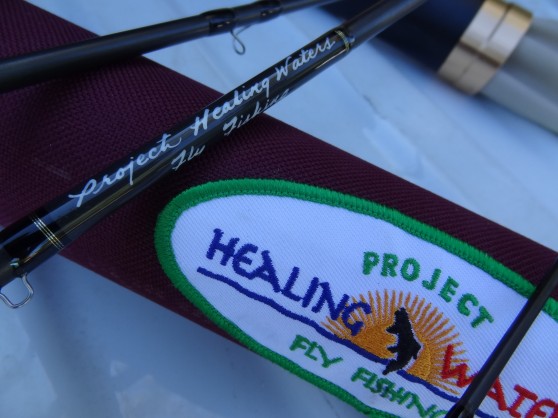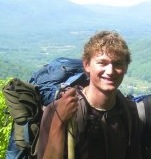With the largest snowpack in recent memory and high flows sustained far into summer, 2011 has been a banner year for the Colorado River. In times like these, it’s difficult to think of the Colorado as a river on the brink, threatened by low flows and temperature problems – but that is exactly the situation facing our state’s namesake river and its tributaries, particularly the Fraser River.
The headwaters of the Colorado River have been tapped heavily for generations. Front Range water providers permanently remove water from the Colorado River basin by pumping it across the Continental Divide through a series of tunnels, pipes, and diversion structures. The most notable of these ‘trans-basin’ diversion projects are the Colorado-Big Thompson Project, which transports water from Granby Reservoir below Rocky Mountain National Park to cities and farms in northern Colorado, and the Moffat Collection System, which draws water from 30 creeks and streams throughout the Fraser River watershed and delivers it to Denver via the Moffat Tunnel. The result? More than half of the rivers’ historic flows are permanently removed and rerouted to the Front Range rather than sustaining important trout and wildlife populations downstream. Indeed, even in this year of epic snowmelt, existing trans-basin diversions are causing low flows and high water temperatures on streams in the Upper Colorado watershed.
Today, the Colorado headwaters face an uncertain future in the face of two proposed expansions: the Windy Gap Firming Project (WGFP) and Moffat Firming Project (Moffat Project). If completed, these projects would leave the Upper Colorado with only 25% of its native flows and the Fraser with only 20%.
These fragile river ecosystems that once teemed with native cutthroat trout may be approaching a tipping point, where further losses could destroy one of Colorado’s most valued gold medal fisheries and decimate the local communities and economies that depend on them. Warning signs are widespread. While the Colorado has raged for much of this summer, only a few years ago it was nearly bone-dry in September. The Colorado, Fraser, and Ranch Creek have seen excessively high water temperatures – putting trout populations at risk and violating state water quality standards designed to protect fish and wildlife. In the Colorado below Windy Gap Reservoir, we have seen the near-total loss of sculpin and stoneflies – the bedrock layer of the food chain. We cannot continue the status quo – much less tap the Colorado more heavily – unless we take real, concrete actions to restore the river.
TU has identified four key actions to secure the future health of the Colorado and Fraser Rivers in the face of future water diversion proposals:
- Keep water temperatures within a range that support fish. When additional diversions remove more water from streams, it can raise water temperatures above levels where trout can survive. When stream temperatures become dangerous, diverters need to cut back in order to protect fish.
- Provide flushing flows. Heavy flows during snowmelt and spring runoff are needed to flush sediment from streambeds and keep fish habitat healthy year in and year out, but we can’t count on 2011-magnitude snowpack every year. The project proponents must commit to providing adequate spring flushing flows every year.
- Take Windy Gap off-channel. Windy Gap Reservoir blocks fish, disrupts sediment and gravel movement, and harms water quality in the Colorado River. A “bypass” to direct the Colorado River around Windy Gap, reconnecting the river, would help to solve these problems.
- Restore river habitat. Instream projects can help restore habitat for fish in stream reaches currently too wide and shallow. Independent estimates put costs for restoration at $7.1 million for the Fraser and $10 million for the Colorado. While large, these numbers are achievable. For example, if such project costs were distributed among ratepayers, Denver Water could contribute its “share” at a cost of only about $1 per household per year.
While these strategies will help rivers, it is also important that monitoring and adaptive management are also in place, to respond to changing conditions or unexpected challenges. Simply put, if the measures being used to protect the river aren’t working, we need to have the means to change direction.
A Not-Quite-Global Agreement
A highly-publicized agreement between Denver Water and West Slope governments earlier this year made some meaningful progress in addressing existing issues for the Colorado River. The agreement offers promise for the future of Front Range and West Slope cooperation on water issues. However, despite the shorthand name that some gave it – the “global solution” – it is neither global nor a complete solution.
The agreement includes provisions that are worth celebrating:
- Future water projects using Denver's facilities (notably the Moffat and Roberts tunnels) will require approval from the West Slope and will need to address concerns on both sides of the Continental Divide.
- Safeguards are included for the Shoshone water rights in Glenwood Canyon, which will help maintain year-round flows in the Upper Colorado.
- Denver agrees to provide 1,000 acre-feet per year of water to help address low flow concerns in both the Fraser and Williams Fork systems.
- Denver will provide $2 million to assist with river habitat restoration in the Upper Colorado basin.
- Water and funds (including an additional $2 million) will be managed through a partnership effort, called "Learning by Doing," designed to adapt to changing conditions Notably, TU is the sole conservation organization that has been included in the management committee for Learning by Doing.
These tools are valuable in helping address past impacts that have put the Colorado River at risk, and TU looks forward to participating in the “Learning by Doing” process and helping make it as successful as possible.
But the agreement is not global – notably, it does not include the largest user of Upper Colorado River water, the Northern Colorado Water Conservancy District (which is the recipient of the Windy Gap project water). Additionally, by its own terms, the agreement does not address new impacts from the proposed expansion of the Moffat and Windy Gap projects at all.
Unfortunately, the media attention around the agreement gave many people the false impression that the Colorado River’s problems - past and future - had been solved. As Drew Peternell, Director of TU’s Colorado Water Project said, “Denver deserves credit for taking a step in the right direction with the global agreement, but there is a large hole that needs to be filled. We urge Denver and Northern to finish the job of protecting the Colorado River from the impacts of current and future trans-basin diversions.”
Mitigation efforts to help protect rivers
The next step in working to defend the Colorado River headwaters – and to actually address impacts of the new projects – came this past spring as the Colorado Wildlife Commission (Commission) and Colorado Water Conservation Board (CWCB) considered “mitigation and enhancement plans” for the WGFP and Moffat Project. TU staff, including the Colorado Water Project’s Mely Whiting and Rob Firth, and local volunteer leaders like Kirk Klancke brought information and recommendations forward to the Commission. We offered not only our perspectives, but also a strong scientific assessment of in-stream habitat needs for the Colorado and Fraser Rivers which was made possible through generous support from Bob Fanch and Devil’s Thumb Ranch. From the original draft plans, Division of Wildlife staff negotiated changes that would improve the plans and better address the needs of the Colorado headwaters. Ultimately, these efforts resulted in progress – particularly at Windy Gap – but fell short of adequately addressing the rivers’ needs.
First the good news: the Windy Gap Firming Project mitigation plan includes a requirement for the project to stop diversions when stream temperatures exceed acute temperature standards (where trout begin to immediately die); and it increased the existing Windy Gap flushing flow requirement from 450 cfs to 600 cfs (a step in the right direction, though true channel flushing requires much more water). Proponents of both projects also made offers of “enhancement” plans to help conduct habitat restoration on the Colorado River.
Yet notable gaps remain. The Colorado River plan provides $4 million less than recommended for restoration. While there was an offer to study the Windy Gap bypass, there is no commitment to fund its construction even if the study documents its value.
The shortcomings on the Fraser were even greater – of the $7.1 million identified need for Fraser basin habitat restoration, only $750,000 was pledged. Denver pledged water to help address temperature issues associated with its expanded diversions in August – but offered no similar measures for the month of July.
Despite these gaps, the Commission and CWCB approved the mitigation plans (and the associated “enhancement” plans). Colorado TU appreciates the efforts made by the Wildlife Commission and Department of Natural Resources to move the ball forward, but these plans fall short of what is needed to keep the rivers from further decline.
The fight continues
The state mitigation process is only “advisory” – ultimately, federal agencies including the US Army Corps of Engineers and Environmental Protection Agency, as well as the Federal Energy Regulatory Commission (for Moffat) and Bureau of Reclamation (for Windy Gap), will decide whether to approve permits for the projects. If approved, these agencies also will define what requirements are included with those permits. As federal agencies evaluate these projects, Colorado TU will continue to communicate our concerns and provide recommendations backed by science, urging them to ensure that any permits that are issued include adequate protections for the rivers.
Ultimately, the future of the Colorado headwaters – and all of our western rivers – depends upon a strengthened commitment to managing our water resources wisely – addressing the need for a reliable water supply on the Front Range without sacrificing the needs of fish, wildlife and West Slope communities that depend on healthy rivers. Colorado TU believes that all Coloradoans, both on the Front Range and the West Slope, value healthy rivers and want to see an intact Colorado River preserved for their children and grandchildren. In the coming months, we will work to build more visibility and awareness of issues facing the Colorado, encouraging citizens to engage as stewards of these places. From understanding the reasons to reduce personal water use, to lending a voice in calling on Denver Water and Northern to take responsibility for the impacts they are causing, to sharing the story of our rivers with friends and neighbors – Coloradoans can make a difference.
Colorado TU will not give up our fight for the Colorado headwaters until we can truly say that we have successfully protected the river for future generations to experience and enjoy.










